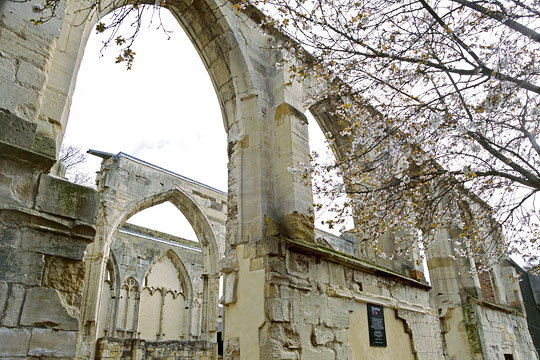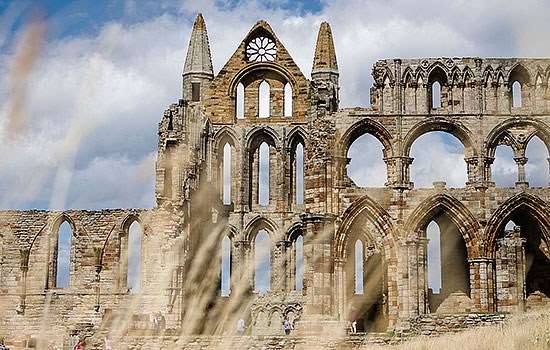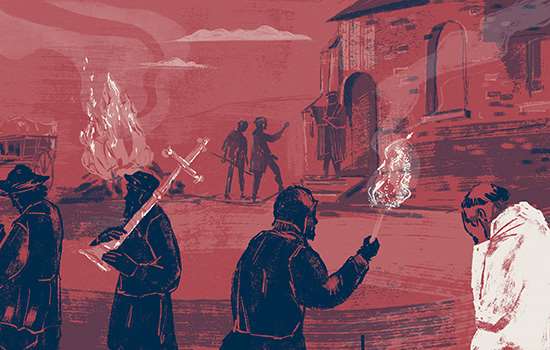History of Greyfriars
The Grey Friars, or Franciscans, were followers of St Francis of Assisi and founded many religious houses across Europe. They earned their name from the grey habits that were worn as a symbol of their vow of poverty.

The Franciscan friary at Gloucester was founded in 1231, but in about 1518 a prominent local family, the Berkeleys of Berkeley Castle, paid for the church to be rebuilt in Perpendicular Gothic style. This incorporated the earlier church but only survived a short while as the friary was surrendered to the king in 1539 at the suppression of the monasteries.
Over the following years, the buildings were put to a number of different uses and in 1643 they were severely damaged by Royalist forces during the siege of Gloucester.
By 1721 only the nave and its north aisle survived and later in the 18th century houses were built within the walls. In 1810 a large house was built into the west end of the medieval remains and this is now a public library.
Description
The friary conformed to the usual monastic plan, with a large church and then the chapter house, refectory, dormitory and other buildings ranged round a central cloister.
Most of these structures have been demolished, but the remains of the church can still be seen – its spacious proportions demonstrate that it was designed to hold large congregations in keeping with the Franciscans’ mission to the laity and their fame as preachers.
The nave and the north aisle still survive and reveal the high quality of the original building. As in many other friaries, the aisle was almost as wide as the nave itself and would originally have had seven bays.
The early 19th century house, which is now the library, occupies the site of the two western bays and has the remains of the south wall of the nave, and the north wall of the north aisle incorporated into its side walls.
In each bay large four-light arched windows can be seen, and at the east end of the north aisle there is evidence of a six-light window. Some of these windows still have portions of Perpendicular tracery.
At the south side of the nave there is a trace of the former north walk of the cloister. Reset in the outer face of the south wall of the nave are two stone shields carved with the arms of Chandos and Clifford of Frampton that may originally have decorated a funerary monument.
There was also a large cemetery to the north of the church where many of the benefactors of the friary lie buried.
Further Reading
Ferris, IM, ‘Excavations at Greyfriars, Gloucester in 1967 and 1974–5’, Transactions of the Bristol and Gloucestershire Archaeological Society, 119 (2001), 95–146


